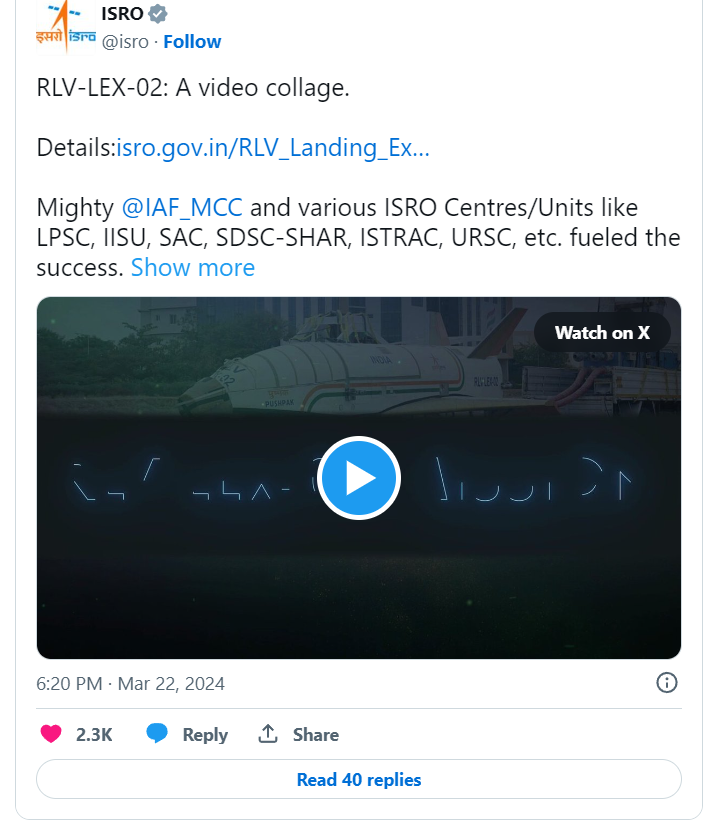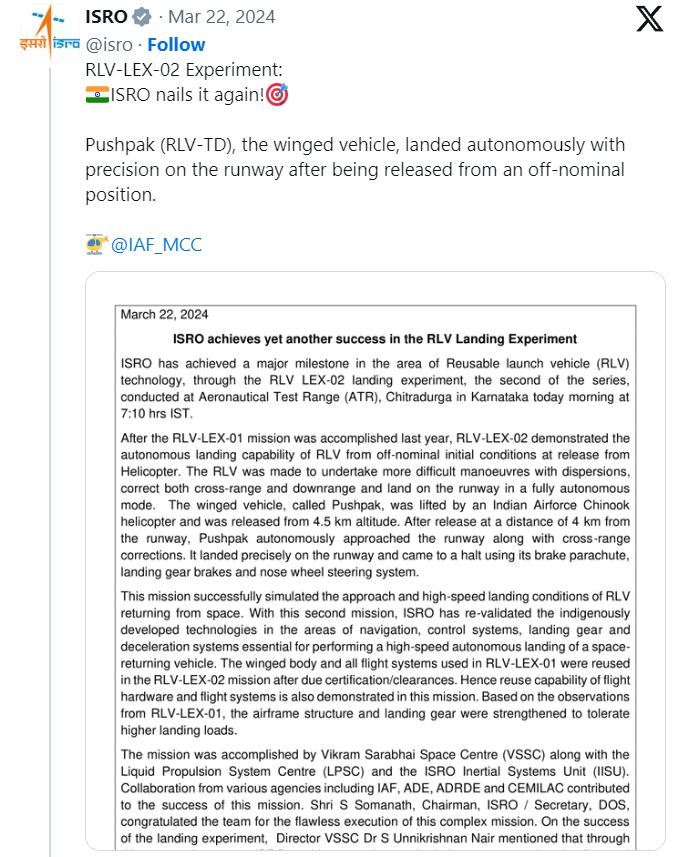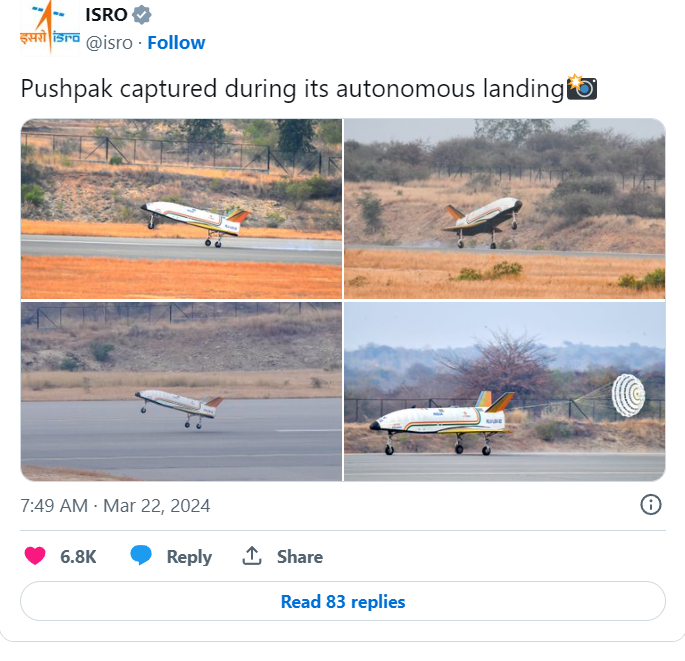The Indian Space Research Organisation (Isro) is preparing for the much awaited third landing experiment (RLV-LEX3) involving the use of its Reusable Launch Vehicle (RLV) prototype, “Pushpak”. By advancing the development and certification of technologies essential for reusable launch vehicles, this next test hopes to open the door to more affordable and environmentally friendly space missions.
The VSSC at Thumba was responsible for the design and development of Pushpak.
Everything for the RLV-LEX3, including the Pushpak prototype and the Chinook helicopter that will be utilize to execute the mid-air release, is in place, according to ISRO officials, as reported by India Today. The test’s exact date is unknown, but it might take place this week.
The mission’s schedule is contingent upon acceptable weather, which could cause a minor postponement into the upcoming week.


After the RLV-LEX2 was successfully completed on March 22, the RLV-LEX3 will try a landing at the Aeronautical Test Range in Challakere, Karnataka. Pushpak achieved a major program milestone by showcasing its autonomous landing skills from off-nominal situations during the prior exercise.
RLV-LEX missions entail raising an unmanned flying prototype known as Pushpak to a predetermined altitude and letting it descend to a safe landing in a variety of weather situations. In LEX-03, an IAF Chinook chopper would hoist Pushpak to a height of 4.5 km and 500 meters to one side of the runway before releasing it. The second mission, LEX-02, had the same height but a 150-meter lateral separation from the runway.
“It must independently approach the runway and maneuver, adjusting its altitude, cross range, and downrange to land on the runway,” he stated. The goal of the LEX-03 mission is to determine how lowering the sink rate, or rate of descent, can lessen the impact load. Additionally, a real-time kinematics (RTK) package will be included. Managing the tailwind circumstances before the next mission is still another difficulty.


NASA’s renowned Space Shuttle served as an inspiration for the RLV concept. It was launch on a rocket and landed at the end of its mission, allowing for reusability and lowering the overall cost of space exploration.
According to ISRO sources, the mission would be a significant advancement since it will use a sophisticated guidance algorithm that can concurrently rectify mistakes in the longitudinal and lateral planes. By improving on the LEX2’s technique, this approach seeks to increase control and precision throughout the landing phase.
